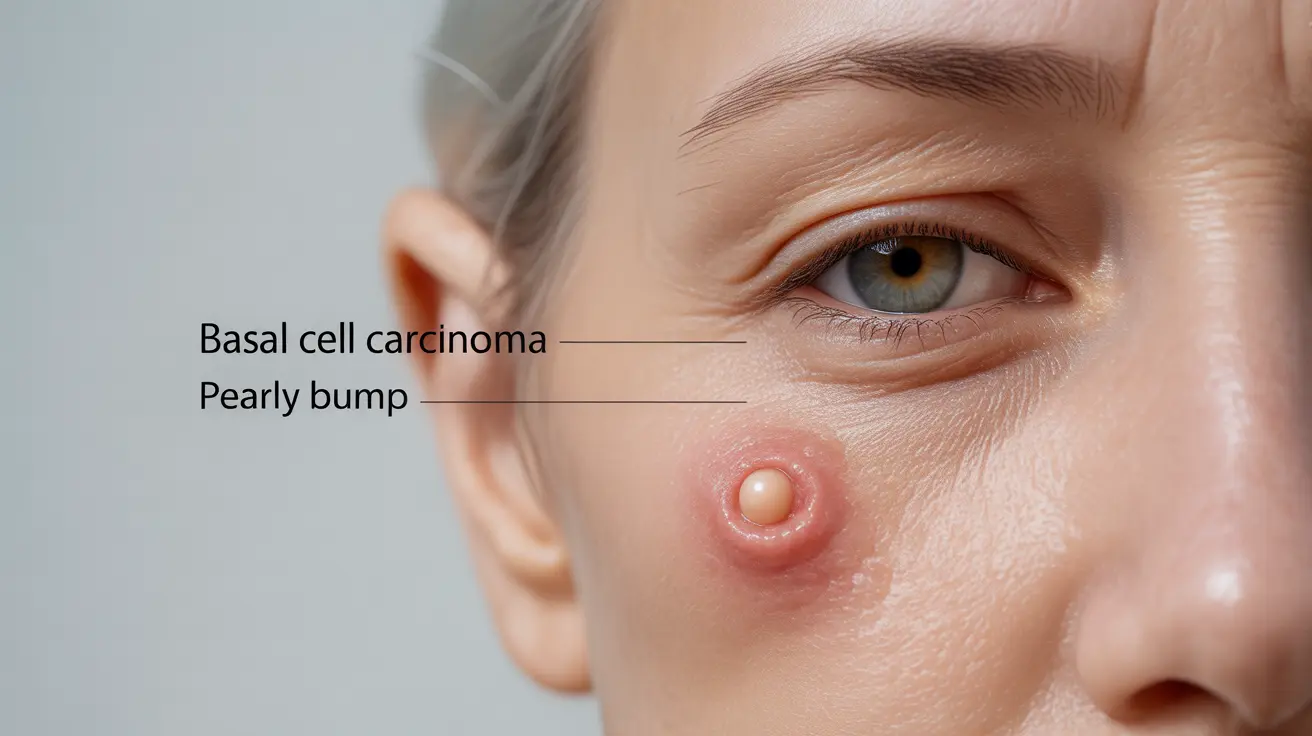Detecting basal cell carcinoma under the eye early is crucial for successful treatment and preserving both vision and facial aesthetics. This common form of skin cancer requires prompt attention and proper medical care, particularly due to its sensitive location near the eye.
Understanding the early warning signs and available treatment options can help you take action quickly if you notice concerning changes in the delicate skin around your eyes. Let's explore the essential information about basal cell carcinoma under the eye, including detection, diagnosis, and treatment approaches.
Recognizing Early Warning Signs
Early basal cell carcinoma under the eye often presents with several distinctive characteristics that shouldn't be ignored:
- A pearly, waxy bump that may be flesh-colored or pink
- A flat, scar-like area that appears brown or flesh-colored
- A small lesion with a slightly raised rolled border
- A recurring sore that bleeds, oozes, or doesn't fully heal
- A growth with a depression in the center
These signs may develop gradually and can be subtle at first. The location under the eye makes self-examination particularly challenging, which is why regular professional skin checks are important.
Risk Factors and Prevention
Several factors can increase your risk of developing basal cell carcinoma under the eye:
- Prolonged sun exposure without protection
- Fair skin, light eyes, or blonde/red hair
- History of sunburns, especially during childhood
- Family history of skin cancer
- Advanced age
- Weakened immune system
Preventive Measures
Taking proactive steps to protect the delicate eye area is essential:
- Wear UV-blocking sunglasses
- Apply broad-spectrum sunscreen daily (SPF 30 or higher)
- Use wide-brimmed hats for additional protection
- Seek shade during peak sun hours
- Perform regular self-examinations
- Schedule annual skin cancer screenings
Diagnostic Process
When a suspicious lesion is found, healthcare providers typically follow a comprehensive diagnostic approach:
- Visual examination with specialized magnification
- Detailed patient history review
- Physical examination of the affected area
- Dermoscopy for closer inspection
- Biopsy to confirm diagnosis
Treatment Options
Treatment selection depends on various factors, including the tumor's size, location, and stage. Common approaches include:
Surgical Options
- Mohs micrographic surgery
- Excisional surgery
- Curettage and electrodesiccation
Non-Surgical Treatments
- Topical medications
- Photodynamic therapy
- Radiation therapy (in specific cases)
The choice of treatment must balance effective cancer removal with preserving eye function and appearance. Your healthcare provider will recommend the most appropriate option based on your specific situation.
Frequently Asked Questions
What are the early signs and symptoms of basal cell carcinoma under the eye?
Early signs include a pearly or waxy bump, a flat scar-like lesion, or a small growth with a raised border. The area may occasionally bleed, ooze, or fail to heal completely.
How is basal cell carcinoma under the eye diagnosed and differentiated from other eyelid conditions?
Diagnosis involves a thorough visual examination, often using dermoscopy, and typically requires a biopsy for confirmation. Doctors will examine the lesion's characteristics and growth pattern to differentiate it from other conditions.
What are the most effective treatment options for early basal cell carcinoma on the lower eyelid?
Mohs micrographic surgery is often considered the gold standard for treating basal cell carcinoma near the eye, as it offers the highest cure rate while preserving healthy tissue. Other options may include excisional surgery or topical treatments for very early cases.
How can I reduce my risk of developing basal cell carcinoma on or near the eyelid?
Protect your eyes and surrounding skin with UV-blocking sunglasses, broad-spectrum sunscreen, and wide-brimmed hats. Avoid excessive sun exposure, especially during peak hours, and get regular skin cancer screenings.
When should I see a doctor if I notice a persistent bump or sore under my eye?
See a doctor if you notice any new growth, sore, or lesion under your eye that persists for more than four weeks, changes in appearance, bleeds easily, or doesn't heal. Early evaluation is crucial for successful treatment.




